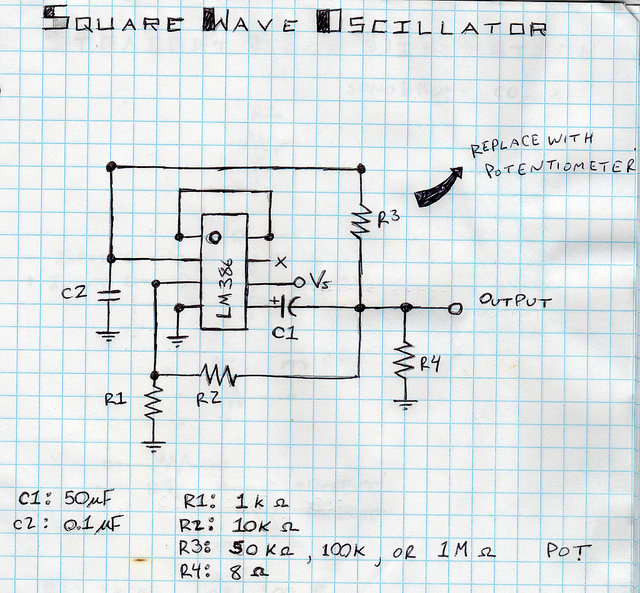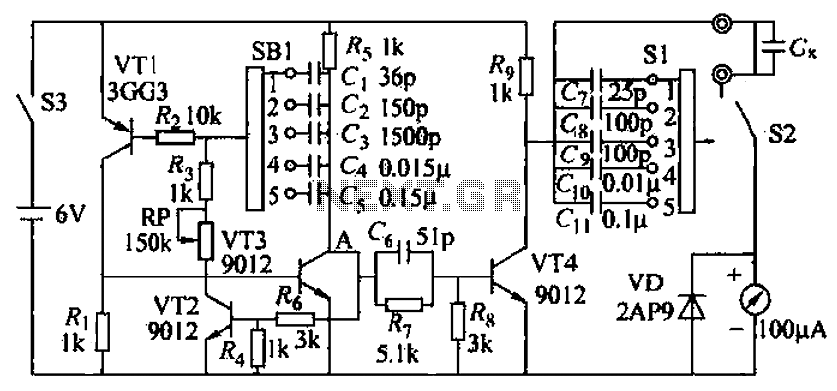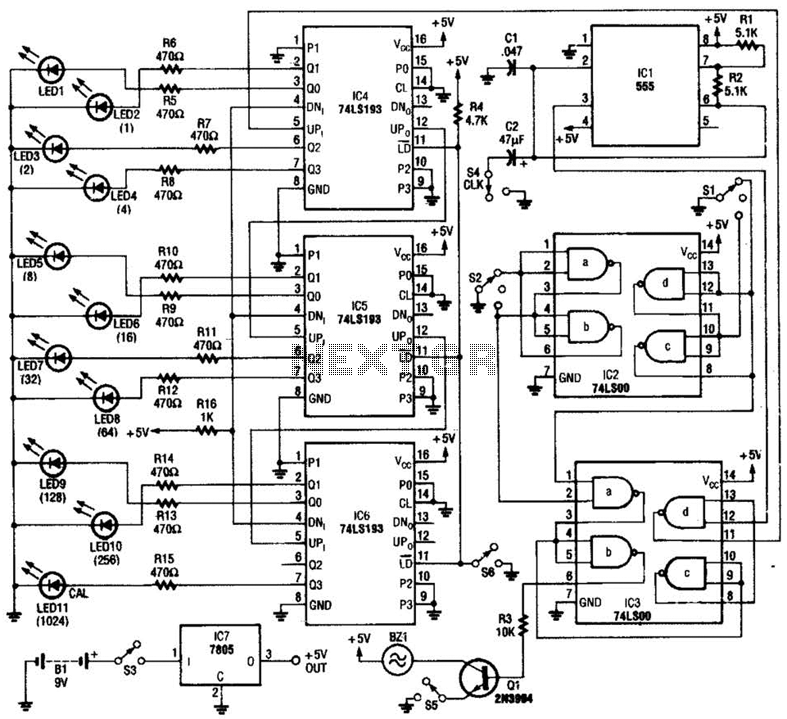
FM Transmitter Circuit

The circuit diagram of a simple FM transmitter utilizing a transistor is presented. While this design may not guarantee exceptional performance or range, it serves as a fundamental example. The circuit employs a general-purpose radio frequency transistor, the BF 494 (Q1), for FM modulation. A condenser microphone is incorporated to capture sound, converting it into electrical variations that are fed to the base of Q1 for amplification and modulation. The capacitor C2 and inductor L1 determine the transmission frequency. The circuit can be powered using a 9V transistor radio battery.
The FM transmitter circuit operates by modulating the audio signal captured by the condenser microphone. The BF 494 transistor acts as the core component for both amplification and modulation. When sound waves strike the condenser microphone, it generates corresponding electrical signals, which vary in amplitude based on the sound intensity. These signals are then directed to the base of the BF 494, where they modulate the carrier frequency.
The capacitor C2 and inductor L1 form a tuned circuit that determines the operating frequency of the transmitter. The values of C2 and L1 can be adjusted to achieve the desired frequency range for transmission. This tuning capability allows for flexibility in selecting the operating frequency, which is essential for avoiding interference with other radio signals.
Powering the circuit with a 9V battery ensures sufficient voltage for the transistor to operate effectively while maintaining portability. It is essential to consider the placement of the transmitter to optimize range and performance, as the design is basic and may be limited by environmental factors.
Overall, this simple FM transmitter circuit serves as an educational tool for understanding the principles of modulation and amplification in radio frequency applications. Further enhancements can be made to improve performance, such as incorporating better components, shielding, or advanced modulation techniques.Here is the circuit diagram of the simple FM transmitter using a transistor. Great performance or range is not guaranteed here, because this is an elementary design. General purpose radio frequency transistor BF 494 (Q1) is used here for obtaining FM modulation. A condenser mic is used here to pickup the sound.The condenser mic converts the sound to electrical variations and this variations are fed to the base of Q1 , which performs the amplification as well as modulation.The capacitor C2 and L1 determines the frequency of transmission.The circuit can be powered from a 9V transistor radio battery. . 🔗 External reference
The FM transmitter circuit operates by modulating the audio signal captured by the condenser microphone. The BF 494 transistor acts as the core component for both amplification and modulation. When sound waves strike the condenser microphone, it generates corresponding electrical signals, which vary in amplitude based on the sound intensity. These signals are then directed to the base of the BF 494, where they modulate the carrier frequency.
The capacitor C2 and inductor L1 form a tuned circuit that determines the operating frequency of the transmitter. The values of C2 and L1 can be adjusted to achieve the desired frequency range for transmission. This tuning capability allows for flexibility in selecting the operating frequency, which is essential for avoiding interference with other radio signals.
Powering the circuit with a 9V battery ensures sufficient voltage for the transistor to operate effectively while maintaining portability. It is essential to consider the placement of the transmitter to optimize range and performance, as the design is basic and may be limited by environmental factors.
Overall, this simple FM transmitter circuit serves as an educational tool for understanding the principles of modulation and amplification in radio frequency applications. Further enhancements can be made to improve performance, such as incorporating better components, shielding, or advanced modulation techniques.Here is the circuit diagram of the simple FM transmitter using a transistor. Great performance or range is not guaranteed here, because this is an elementary design. General purpose radio frequency transistor BF 494 (Q1) is used here for obtaining FM modulation. A condenser mic is used here to pickup the sound.The condenser mic converts the sound to electrical variations and this variations are fed to the base of Q1 , which performs the amplification as well as modulation.The capacitor C2 and L1 determines the frequency of transmission.The circuit can be powered from a 9V transistor radio battery. . 🔗 External reference





